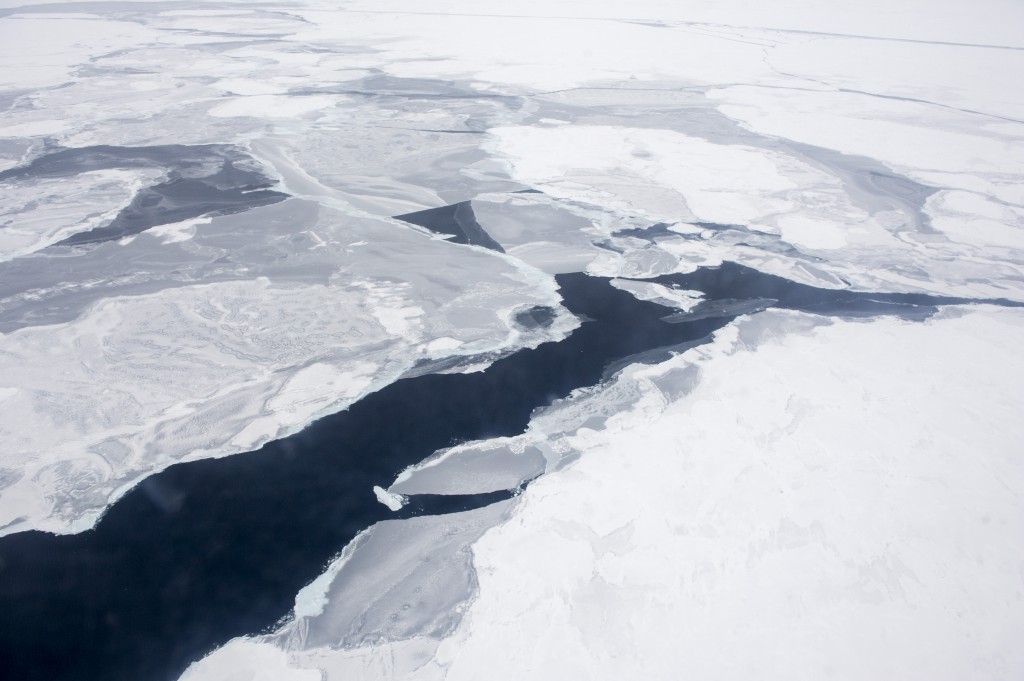Trump is failing the US — and the Arctic — by ignoring climate change
OPINION: The Arctic and the rest of the world need strong leadership on climate change. Trump is giving us the opposite.

In his January interview with a fawning Piers Morgan, American Pres. Donald Trump again praised himself as a “stable genius” and demonstrated that he knows nothing about climate change and lacks the discipline to learn.
“There is a cooling and there is a heating,” Trump said when asked if he believes in climate change, offering an analysis that would embarrass the audience of “Sesame Street.”
He went on to say what he believes in is “clear air,” “crystal clear beautiful water” and “just having good cleanliness in all.”
[Trump’s view that ice caps are ‘setting records’ baffles scientists]
We’ve never had a U.S. president so proud to be uninformed and so blind to consider it a virtue.
Every nation has reason to look elsewhere for leadership on climate change and other complex matters, as the disconnect between Trump and the truth grows, encouraged by a Republican Congress desperate to avoid crossing the temperamental leader.
He confuses weather with climate, repeats Fox News falsehoods and fables and refuses to trust scientists. In his mind, “climate change” was a term invented because cold snaps prove that “global warming” isn’t real and this is all a Chinese hoax to damage the U.S.
But Arctic nations — including the United States — have to adapt to the reality of rising temperatures and declining sea ice and melting permafrost, despite what Trump says.
“The ice caps were going to melt, they were going to be gone by now, but now they’re setting records, so OK, they’re at a record level,” Trump said.
He’s right about a record level. And wrong about the direction that things are headed.
The average coverage of sea ice in the Chukchi and Beaufort seas from November through January was the lowest it’s been in the satellite area, Fairbanks, Alaska-based meteorologist Rick Thoman said.
The more open water there is, the more heat that water absorbs. Warmer water leads to a decline in ice cover, more storm damage on the coasts, more erratic weather and rising sea levels, among other things.
Zack Labe, a doctoral candidate at the University of California Irvine, says that the thickness of Arctic sea ice has declined by nearly half in the last 40 years.
“The reduction in sea ice thickness contributes to loss of animal habitats, increased heat exchanges between the ocean and atmosphere, preconditioning of sea ice to more easily melt during the summertime, and increased access to shipping lanes and mining of natural resources,” said Labe.
Permafrost temperatures in Alaska, Canada and Svalbard have shown the greatest increases since 2000.
In terms of substantive action on climate change, Trump’s gibberish about sea ice on TV is not as alarming as his action on the voluntary Paris agreement to reduce greenhouse gases and try to slow the rate of warming.
He continues to mischaracterize this international effort as a “horrible deal” in which all other countries are conspiring to punish the U.S.
The decision by Trump to pull out of the Paris agreement — driven by his disdain for anything containing Obama’s fingerprints — is the most tangible evidence of his know-nothing approach to climate change.
The U.S. can’t officially withdraw until a day after the next presidential election, so perhaps not all is lost.
But other countries by then may have lost faith in the ability of the U.S. political system to accept science and deal with the challenges confronting mankind — trust that will not be immediately restored.
Under Trump, the federal government has started to remove climate change from many websites entirely or make vital information less accessible.
This does not mean that U.S. scientists and their counterparts in other nations have abandoned a rational approach.
A federal report last fall, the product of 13 government agencies, contradicted many of the Trump administration talking points on climate change, stating it is “extremely likely” that human activity has is the cause for the rise in temperatures witnessed since the mid-20th Century.
And the 2017 Arctic Report Card , the work of 85 researchers in a dozen countries — and backed financially by the U.S. government — notes that observations in 2017 “continue to indicate that the Arctic environmental system has reached a ‘new normal,’ characterized by long-term losses in the extent and thickness of sea ice cover, the extent and duration of the winter snow cover and the mass of the Greenland Ice Sheet and Arctic glaciers, and warming sea surface and permafrost temperatures.”
The scientists conclude that this is what awaits the Arctic region: “The unprecedented rate and global reach of Arctic change disproportionally affect the people of northern communities, further pressing the need to prepare for and adapt to the new Arctic.”
Someone needs to tell the president.
Dermot Cole, a veteran Alaska newspaper columnist, lives in Fairbanks. He also writes at dermotcole.com.